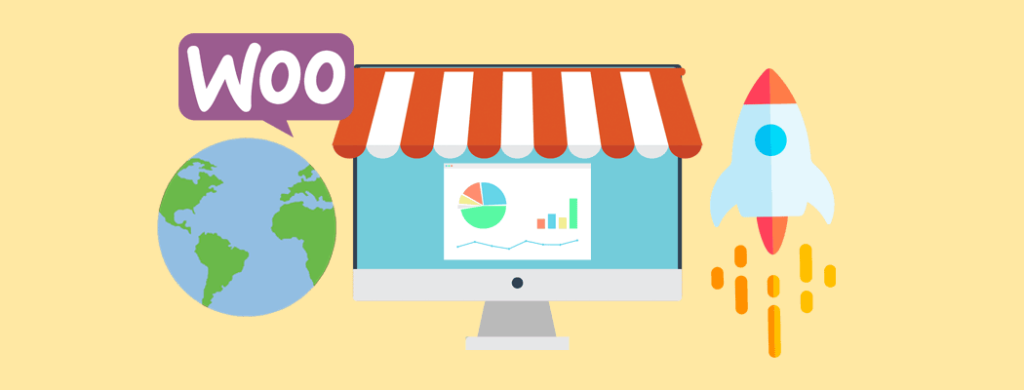Enterprise eCommerce isn’t just about selling – it’s about delivering seamless, lightning-fast and highly customised shopping experiences. Traditional WooCommerce setups, while powerful, can struggle in some cases with performance bottlenecks, design limitations and scalability challenges at an enterprise level. That’s where headless WooCommerce changes the game.
By decoupling the front end from the backend, brands gain unmatched speed, design flexibility, and the ability to scale without limits. Whether building a custom storefront with React, Next.js, or Vue.js, or integrating seamlessly with third-party tools, headless WooCommerce unlocks a future-proof eCommerce strategy.
But is it right for your business? In this guide, we’ll explore how headless WooCommerce empowers enterprise brands, the benefits of making the switch, and real-world examples of companies thriving with a headless approach. Let’s dive into the future of WooCommerce – one that’s faster, more flexible and built for growth.
What Is Headless WooCommerce? Decoupling for Ultimate Control
At its core, headless WooCommerce separates the front end (what users see) from the backend (where data is managed). Instead of relying on WordPress themes and PHP-based rendering, businesses can use modern JavaScript frameworks like React, Next.js, Vue.js, or Gatsby to create fully customised, high-performance storefronts.
In a traditional WooCommerce setup, the frontend and backend are tightly coupled, meaning every page load requires PHP processing. This can slow down performance, limit design flexibility, and create scalability challenges – especially for enterprise brands handling high traffic and complex product catalogs.
By going headless, WooCommerce remains the eCommerce engine, managing products, orders, and payments. Meanwhile, the frontend fetches data dynamically via the WooCommerce REST API or GraphQL, delivering lightning-fast, seamless shopping experiences.
This decoupled approach offers unmatched flexibility. Want a mobile-first progressive web app (PWA)? No problem. Need a high-speed, static site with global reach? Easy. With headless WooCommerce, enterprise brands get complete control over their storefront, faster load times, and the ability to integrate with any third-party tool or system – without the constraints of a monolithic WooCommerce theme.
By leveraging headless architecture, businesses can build scalable, future-proof eCommerce experiences tailored to their exact needs – whether selling globally, personalising customer journeys, or optimising for ultra-fast performance.
Why Enterprise Brands Are Going Headless
Enterprise eCommerce is about more than just selling products. It’s about delivering seamless, high-performance experiences that scale. Traditional WooCommerce, while powerful, wasn’t originally designed to handle the demands of high-traffic, complex enterprise operations. Headless WooCommerce solves this by decoupling the front end from the backend, allowing businesses to build faster, more flexible and infinitely scalable online stores.
Here’s why enterprise brands are making the switch:
1. Performance: Speed That Converts
Speed is everything in eCommerce. A slow site can kill conversions, drive up bounce rates and frustrate customers.
In fact, Cloudflare reported that the slower your page load, the lower your conversion rate will likely be with a site loading in over five seconds having an median conversion rate of less than 0.6%. Whereas, sites that load in 2.4s see an average 1.9% conversion rate. Also, according to KissMetrics, the slower your site’s load time, the higher your bounce rate will be.
Traditional WooCommerce sites rely on PHP-based rendering, which means every page request has to pass through WordPress and WooCommerce’s backend, which can slow things down, especially as traffic grows.
This is how headless WooCommerce boosts speed:
- Static Site Generation (SSG) – Technologies like Next.js, Gatsby, and Nuxt.js can pre-render pages as static HTML, making them load instantly.
- Server-Side Rendering (SSR) – Dynamic content can be pre-processed on the server, delivering a faster experience than traditional PHP rendering.
- Content Delivery Network (CDN) Optimisation – With a headless setup, enterprises can deploy storefronts globally, reducing latency and ensuring rapid page loads for international customers.
The bottom line: Faster sites lead to higher conversion rates, lower bounce rates, and better search rankings. Headless WooCommerce ensures your site keeps up with modern performance demands.
2. Customisation: Total Design Freedom
Traditional WooCommerce themes can be limiting. Even with custom development, you’re still working within the constraints of the WordPress templating system. Headless WooCommerce removes these restrictions entirely, giving brands total control over their frontend design and functionality.
Here’s a glance at what customisation looks like in a headless WooCommerce setup:
- Use any frontend framework – React, Vue.js, Svelte – choose the best technology for your needs.
- Build progressive web apps (PWAs) – Offer app-like experiences with offline browsing, push notifications and faster interactions.
- Seamless omnichannel integration – Sell across multiple platforms (mobile, desktop, voice commerce and smart TVs) without performance trade-offs.
The bottom line: Headless WooCommerce means no more design limitations – enterprises can create completely unique, interactive and engaging storefronts without being boxed in by WooCommerce themes.
3. Scalability: Growing Without Limits
Enterprise businesses need an eCommerce platform that can scale seamlessly, handling thousands (or millions) of products, global traffic spikes and complex integrations without slowdowns or downtime.
Here’s a look at how headless WooCommerce improves scalability:
- Microservices architecture – Instead of relying on a single monolithic system, headless WooCommerce can be broken into smaller, independent services. For example, a dedicated search engine, product recommendation engine or ERP integration.
- Multi-Region deployments – Frontend applications can be hosted on Vercel, Netlify, or AWS, ensuring fast load times worldwide.
- API-Driven ecosystem – Enterprises can integrate third-party tools such as a CRM, ERP and AI-powered personalisation engines without overloading WooCommerce’s backend.
The bottom line: With headless WooCommerce, growth is never a bottleneck. Businesses can scale globally, handle high-traffic loads and integrate seamlessly with mission-critical enterprise tools.
For more, check out our guides WooCommerce Scaling Secrets: From Startups to Enterprise Giants and Set Sail: Global Growth with WooCommerce Shipping Integrations.
The Business Case for Headless WooCommerce
Headless WooCommerce isn’t just a technical upgrade – it’s a strategic business move. While traditional WooCommerce setups work well for small to mid-sized businesses, enterprise brands with high traffic, global reach, and complex eCommerce needs often outgrow its default structure. The question isn’t just “Can we go headless?” but rather “When does it make business sense to go headless?”
When Does Headless WooCommerce Make Business Sense?
Headless WooCommerce is best suited for enterprise brands facing performance, scalability and customisation challenges that a traditional WooCommerce setup can’t overcome. One of the clearest signs a business should consider going headless is when slow load times start impacting conversions.
As previously touched upon, traditional WooCommerce stores rely on PHP-based page rendering, which can lead to performance bottlenecks, especially under heavy traffic. A headless setup uses modern frontend technologies and global content delivery networks to ensure consistently fast page loads, improving user experience and sales.
Customisation is another key factor. Businesses that require highly interactive, personalised or mobile-first shopping experiences often find standard WooCommerce themes too limiting. Headless WooCommerce allows for complete control over design and functionality, enabling advanced features like AI-driven personalisation, progressive web apps and interactive product displays.
For companies expanding internationally, a headless approach provides a significant advantage by enabling multi-region storefronts. Unlike traditional setups that rely on a single server location, a decoupled architecture allows businesses to serve localised versions of their site with faster load times in different regions.
Finally, enterprises that need deep integrations with CRM, ERP or AI-driven marketing systems benefit from an API-first WooCommerce setup, which allows for seamless data exchange across platforms without performance slowdowns.
Total Cost of Ownership (TCO): Is Headless Worth the Investment?
Headless WooCommerce requires a larger initial investment than a traditional WooCommerce site, but it often leads to lower long-term costs and increased revenue. The primary reason for the higher upfront cost is custom development.
Unlike traditional WooCommerce, where themes and plugins handle most of the functionality, a headless implementation requires a dedicated front end built with frameworks like React or Vue.js. This involves hiring experienced developers to design and maintain the system.
Despite the initial costs, headless WooCommerce reduces long-term expenses by eliminating frequent redesigns and minimising performance optimisation efforts. Traditional WooCommerce setups often require ongoing modifications to improve speed, adapt to new features or scale effectively. A headless setup, on the other hand, is modular, allowing businesses to update specific components without disrupting the entire system.
From a revenue perspective, the benefits of headless WooCommerce often outweigh the costs. Faster load times and an optimised user experience contribute to higher conversion rates, improved customer retention and better search engine rankings. The ability to integrate seamlessly with third-party services also enhances automation, reducing operational costs.
For enterprises, the decision to go headless is an investment in long-term scalability and performance, ensuring a competitive edge in a rapidly evolving eCommerce landscape.
Challenges of Going Headless (and How to Overcome Them)
Headless WooCommerce introduces development complexity, requiring a custom frontend built with frameworks like React or Vue.js. To manage this, businesses should partner with experienced developers who specialize in API-driven eCommerce such as Progressus.
The higher initial cost is another challenge, as custom development and API integrations require more resources. However, long-term benefits like scalability and performance improvements outweigh the investment.
Finally, ongoing maintenance is more involved since the frontend and backend operate independently. Using DevOps automation, CI/CD pipelines, and structured API documentation ensures smooth updates and efficient management, making headless WooCommerce a sustainable enterprise solution.
How to Transition from Traditional WooCommerce to Headless
Migrating from a traditional WooCommerce setup to a headless architecture requires careful planning to minimise disruptions and maximise the benefits of the transition. The first step is defining business goals and identifying the specific limitations of the current setup.
If slow load times are a major issue, prioritizing performance optimisations such as static site generation or server-side rendering can be an effective starting point. If customisation is the main objective, businesses may focus on rebuilding the frontend while keeping WooCommerce’s backend intact.
A hybrid approach is often the best way to transition smoothly. Instead of immediately switching to a fully headless setup, businesses can start by decoupling specific elements, such as product catalogs or landing pages, while keeping checkout and account management within the traditional WooCommerce structure. This allows teams to test headless benefits before committing to a complete migration.
Once the benefits are clear, the next step is to fully migrate the storefront to a custom front end while maintaining API-driven interactions with WooCommerce’s back end. At this stage, businesses should also consider integrating third-party services like headless CMS platforms, CRM systems and AI-powered analytics to enhance functionality.
A well-executed migration ensures that enterprises gain the full advantages of a headless approach without compromising operations.
Here at Progressus, we’re certified expert WooCommerce partner developers and we can help you achieve your goals with turning WooCommerce headless. Feel free to reach out to us about the specifics of your project for a quote.
Is Headless WooCommerce Right for Your Business?
Headless WooCommerce is ideal for enterprise brands needing speed, flexibility and scalability beyond traditional setups. If slow load times, design limitations or integration challenges are holding your business back, a headless approach can provide a future-proof solution.
While the transition requires investment, the long-term benefits – higher conversions, better user experiences and seamless scalability – make it worth considering.
Ready to explore headless WooCommerce? Get in touch to discuss how we can help.


